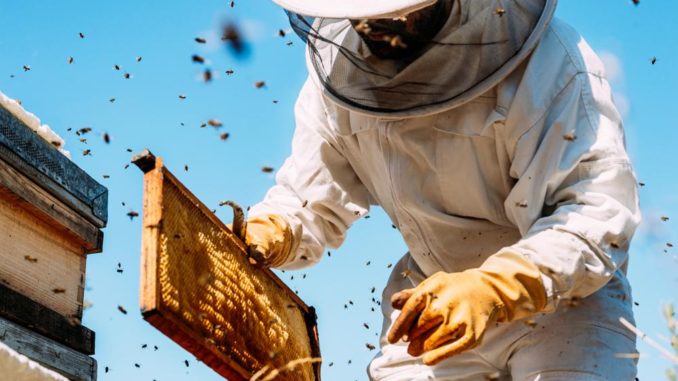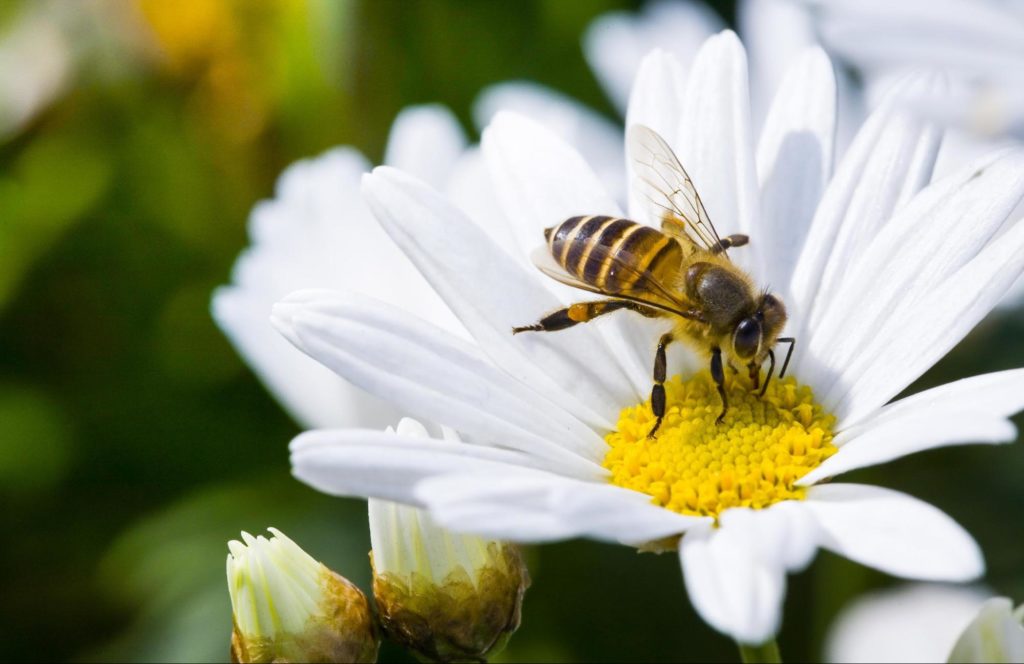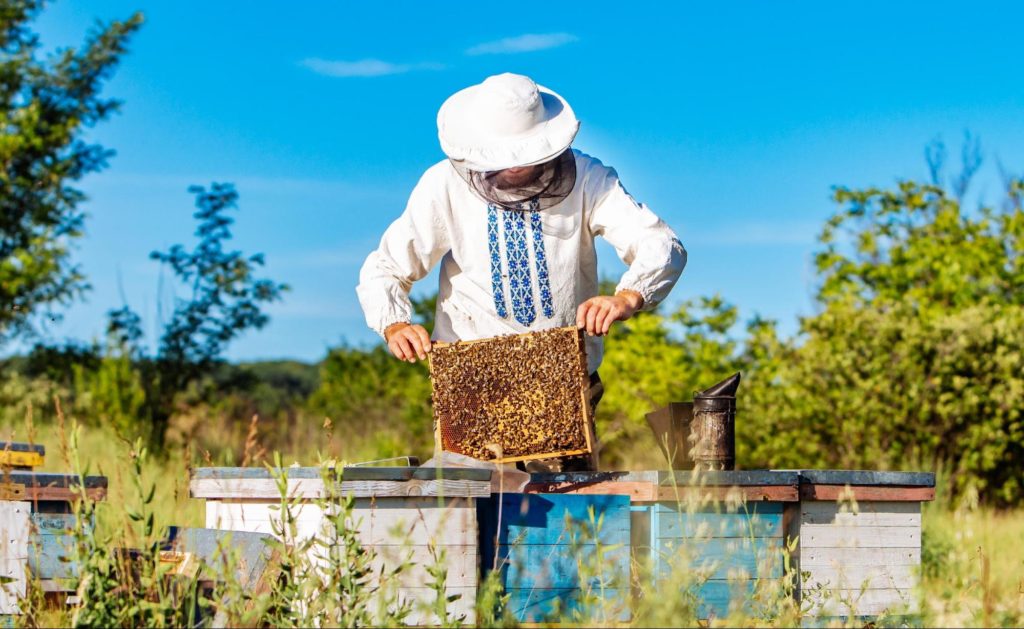
Kathleen Miller, Gaia Grows
The bee is more honored than another animal, not because she labors, but because she labors for others.
-St. John Chrysostom
One of the best ways to help the environment is beekeeping. A single beehive can produce thirty pounds or more of yummy honey each season. That is enough for your family and some to sell or trade and barter. Beekeeping dates back to when the original settlers first brought honeybees, not natives, to the new land. It was the pioneers and homesteaders with their wagons that carried the first colonies of bees out west. Back then bees were kept in hives of straw, called skeps, or in hollow logs.

Bees gather food from a variety of plants including wildflowers, fruit blossoms, shrubs, trees, and even some weeds. These are all sources of the sweet nectar that bees convert into honey and pollen. Bees perform the valuable service of pollinating many varieties of plants. Many commercial fruit growers often import bees to pollinate their orchards.
The correct location will get your hives off to a healthy start and ensure a productive season. One of the first steps would be to look for a spot with good drainage free of any dampness that could encourage the growth of mold. Your hives should be sheltered from the wind. Bees are susceptible to chill and it can reduce their efficiency in honey production.
Extreme cold can kill bees, and in the winter a good windbreak may mean the difference between life and death for the entire colony of honeybees. Make sure that you locate your hives where there is adequate sunlight to warm the hive and maintain the hive’s inside temperature of 93 degrees. You should position the entrance of your hive toward the east or south to take advantage of the warming effect of the sun.
Afternoon shade is also important, especially in the hotter parts of the country. Excessive heat can be fatal to bees as well as cold. Also, remember to locate your beehive near a good supply of forage plants for sources of nectar and pollen for your bees. Bees can forage as far as two miles from the hive.

It is recommended to start your beekeeping adventure in the spring so the bees can build up their numbers before the honey flow. Keep it simple and start on a small scale with one or two hives. Two hives have an advantage since if one queen dies, the colonies can be combined. Of the various strains available, Italian bees are the bees for the beginner. They are gentle, have disease resistance, and are good foragers. Local bee supply stores offer complete beginners’ kits, including bees, hives, tools, protective gloves, and veil and instructions. Further, into the season, you can purchase extra supers and frames. Bees need plenty of fresh water so try to locate them near a stream or a pond.
When you order your bees, they are shipped in packages with wire screen sides and a mated queen with a can of syrup to feed them. The queen is in a small cage inside the package with several workers to tend her. The exit hole of the queen cage is usually closed with a plug of soft candy that the other bees will eat through to release her. Check your bees on arrival to make sure that they are healthy and that the queen is alive. Once the bees have been installed, open the hive as little as possible, every one or two weeks is enough to check on your bees.

A bee will only sting you if it feels scared or threatened. When keeping bees remember it is important that you wear protective gear such as and veil, coveralls, gloves, and boots. You should always move calmly and gently to avoid alarming the bees. If you want to open the hive, quiet the bees first with your smoker, this chills them right out. When a bee stings, its barbed stinger becomes trapped in the skin and is torn loose when the bee escapes. The bee later dies and the venom sac remains attached to the stinger and continues to pump poison into the wound. When stung make sure to scrape off the stinger as quickly as possible with a fingernail or knife blade. Do not try to pull it out. You will only squeeze more of the venom into the wound. Most people become immune after a few stings. Those who have severe reactions should talk to their doctors first before taking up beekeeping.

An established hive will get you thirty to sixty pounds of honey a year. You will have to wait a year for your first honey harvest. Plants provided nectar in two main flows. The spring flow starts with the blossoming of dandelions and fruit trees and those blooms last until July. The fall flow begins around September and ends when the hard frost kills the last flowers. Honey can be extracted after each flow, but many beekeepers prefer to wait until the end of the fall flow. Beekeeping is one of the most sustainable endeavors one can do to help Gaia (Mother Earth). If you would like to learn more about beekeeping in Northern Colorado visit the Northern Colorado Beekeepers Association and become a member.https://nocobees.org/
Sustainable living, gardening, and farming is based on an understanding of ecosystems, and the study of relationships between organisms and their environment. It has been defined as an integrated system of plant and animal production practices that will last over time. Having a harmonious relationship with Gaia (Mother Earth) provides food for people, enhances the natural environment upon which the community depends, makes efficient use of resources, and integrates natural cycles that sustain economic viability, as well as enhances the quality of life for the community as a whole.
Support Northern Colorado Journalism
Show your support for North Forty News by helping us produce more content. It's a kind and simple gesture that will help us continue to bring more content to you.
BONUS - Donors get a link in their receipt to sign up for our once-per-week instant text messaging alert. Get your e-copy of North Forty News the moment it is released!
Click to Donate
